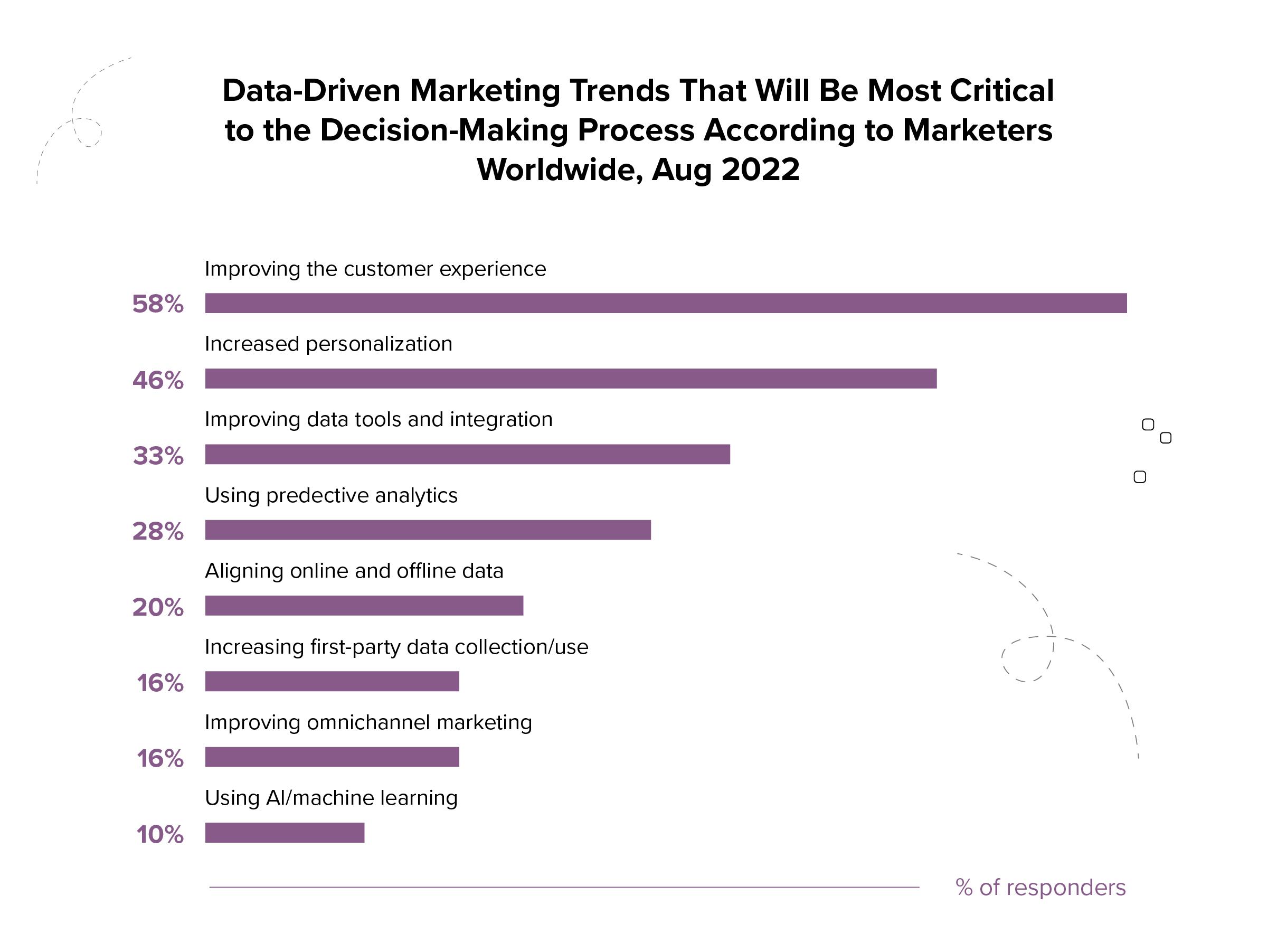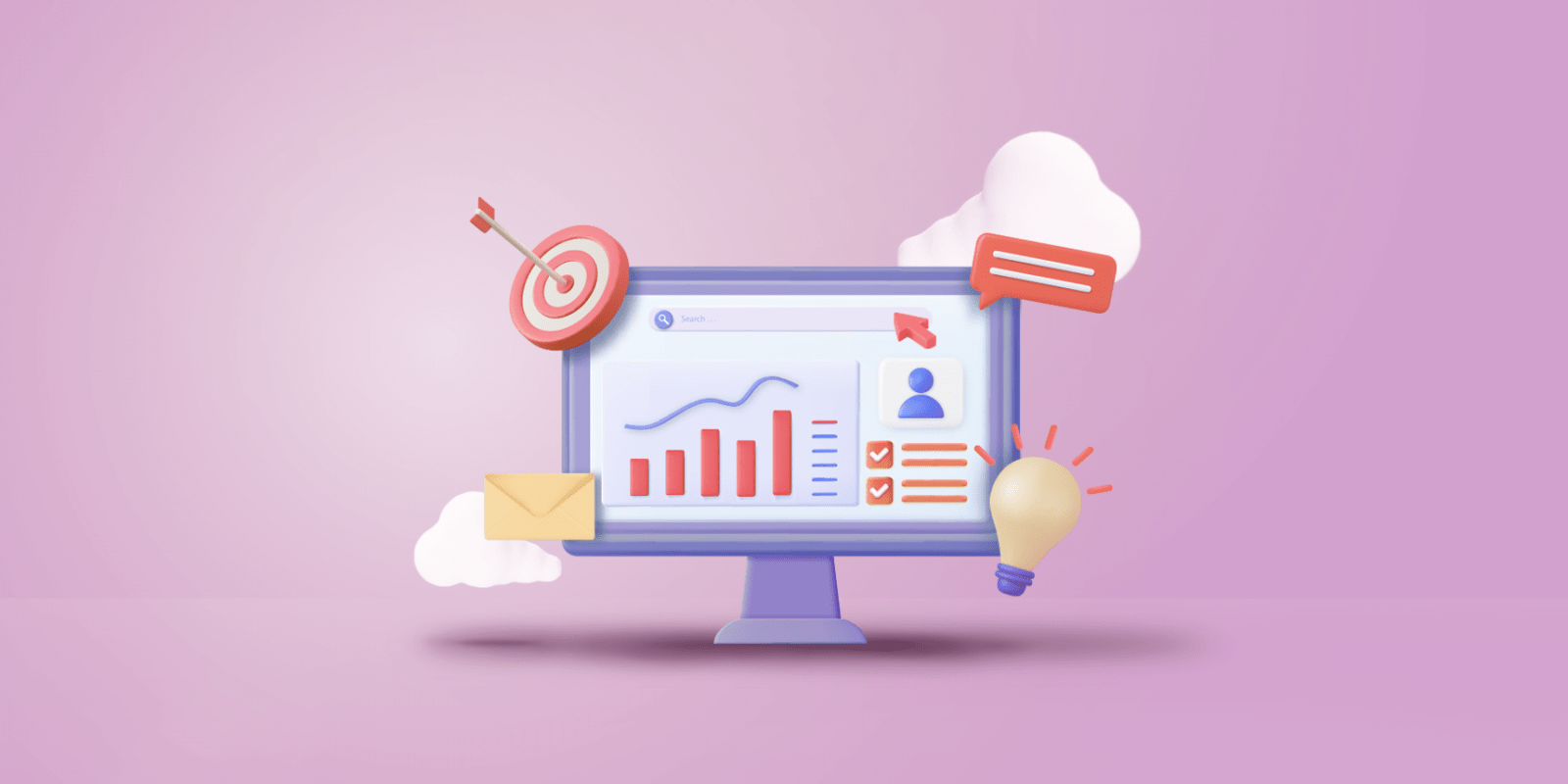Last Updated on: 24th May 2024, 09:38 pm
Whether it’s Google searches, site analytics, or device usage statistics, we collectively create 2.5 billion gigabytes of data every single day. By adopting a data-driven approach, companies can make better decisions, build deeper connections with their customers, and build better products.
However, the sheer volume of information can be disorientating, and it is easy to get lost in the noise. Fortunately, you’re not alone. In this article, we’ll be your guide to the world of data-driven strategies, and help you navigate your way through these deep waters.
In this article, you will learn:
- What a data-driven strategy actually entails
- How you can apply data to your marketing strategy
- Why Deep Learning is a data-driven marketer’s best friend
Table of contents:
- What is a data-driven strategy?
- The benefits of implementing a data-driven approach
- How can I implement a data-driven strategy?
- Deep Learning is the ace up the data-driven marketer’s sleeve
- A data-driven approach combines culture and technology
What is a data-driven strategy?
In general terms, a data-driven strategy is any strategy that uses data analysis in order to inform decision-making. A company will use datasets at its disposal in order to draw conclusions about its customers, make meaningful improvements to its products, and ultimately become more efficient operators.
There are many benefits to this approach. Using data helps organizations gain an unvarnished understanding of their situation, which is probably why data-driven companies drive 5 to 8 times more ROI on marketing spend than those that don’t. Additionally, it enables faster decision-making, with 57% of companies highlighting it as the primary benefit. Finally, it eliminates bias in the decision-making process, helping to prevent silos or corruption within an organization.
 Source: eMarketer, Ascend2, 2022
Source: eMarketer, Ascend2, 2022
There are a number of benefits to data-driven learning, but brands put a strong emphasis on personalization and improved customer experience. In a marketing context, personalization will be key, but a data-driven strategy can also help you better understand what your customers are actually looking for, as opposed to what you think they’re looking for. It also enables you to better target the right customers at the right moment.
The benefits of implementing a data-driven approach
Applying a data-driven approach in marketing offers numerous benefits that can help businesses make more informed decisions, optimize their strategies, and achieve better results. Here are some key benefits of using data-driven marketing:
- Improved Targeting: Data-driven marketing allows businesses to understand their audience better. By analyzing data from various sources, companies can target their marketing efforts more precisely, reaching the right people with the right message, at the right time.
- Personalization: Data-driven marketing enables the creation of highly personalized campaigns. By collecting and analyzing data, companies can tailor their messages, product recommendations, and offers to individual customers – increasing engagement and conversion rates.
- Optimized Content: Marketers can use data to determine which types of content perform best. By tracking metrics like click-through rates and conversion rates, they can refine their content strategy to deliver more of what their audience wants, leading to higher engagement and ultimately conversions.
- Enhanced Customer Insights: Data-driven marketing provides valuable insights into customer behavior and preferences. This understanding can lead to the development of more effective marketing strategies, better product development, and improved customer service.
- Cost Efficiency: By analyzing data, marketers can identify which marketing channels and campaigns are most cost-effective. This helps in allocating resources more efficiently and optimizing return on investment (ROI).
Ultimately, a data-driven approach to marketing makes you better at conversion and will have a profound impact on your ROI. On paper, this sounds amazing, so you’re probably asking yourself…
How can I implement a data-driven strategy?
The concept sounds simple, gather the data, interpret it, and then use that to make a plan. Additionally, it requires the right culture in order to properly utilize the data. To illustrate why this happens, let’s look at a hypothetical example:
A company is launching a new line of luxury cars, brimming with smart features. They believe that tech-savvy under-30s are their core target market, so they go out, gather data to justify this assumption, create a presentation brimming with colorful charts, and get the green light to go forward with a six-figure advertising budget. Six months later, traction isn’t there, under-30s don’t seem interested, and hundreds of thousands of marketing dollars have been wasted.
What mistake did our hypothetical company make? Rather than trying to use data to inform strategy, they allowed their preferred strategy to influence their data collection and interpretation. This led to an incorrect conclusion. Often this is a simple case of confirmation bias, however, people can also deliberately manipulate data in order to support their preferred course of action.
The key to avoiding this is to ensure strong data literacy amongst your team and build a positive culture where people feel comfortable admitting that their assumptions were incorrect. It is important that the ability to course correct based on new information isn’t ridiculed, but encouraged.
There are a few companies that have used this method to great success. For example, the fitness brand Under Armor was able to use data insights to hone in on “focused performers” and transform their company from a product-led model to a consumer-focused strategy. They used this data to combine a physical product, like sports shoes, with an app that helped its customers optimize their workout for maximum effect.
Even with a strong culture and data-savvy team, there is another major pitfall: Data overload. Finding useful data can be a bit like trying to find a needle in a haystack, and if you don’t find effective ways to filter it, you will either gain no useful conclusions due to noise or potentially even draw incorrect conclusions.
This is where a bit of technology can come to the rescue.
Deep Learning is the ace up the data-driven marketer’s sleeve
Deep Learning is an advanced form of Machine Learning that is capable of not just interpreting vast unstructured datasets, but independently learning as it does so. It does this by processing the data layer by layer. Each layer uses the knowledge gained from the previous one in order to draw in-depth conclusions, ultimately highlighting trends or insights that a human analyst may have missed on their own. This helps to explain why 65% of companies are looking to implement some form of machine learning solution into their data-driven strategies.
There are some pretty big benefits for marketers. It enables you to take advantage of much larger data sources than you could with a purely human team, and it also lets you make sense of chaotic, complicated data signals from multiple sources. Deep Learning is already used in self-driving technology, to scan for cancer, and — in RTB House’s case — to power marketing campaigns.
At RTB House, we use Deep Learning in 100% of our campaigns, and it enables us to do some pretty amazing things. For example, it powers our ContextAI solution, which scans 95% of the internet in over 40 languages to categorize content and identify which user groups are most likely to engage with it. We also use it to optimize the ad-buying process, show personalized creatives to users, and power privacy-friendly cookieless marketing techniques. This targeting methodology will become more commonly used in the near future as third-party cookies are depreciated.
Deep Learning can be harnessed to scrutinize a multitude of data elements, pinpointing the most attractive aspects of a product or service for a user. The information is subsequently employed to decide on the most effective ad content and its optimal placement. This has proven effective in the real world.
For example, we were able to use Deep Learning to help Debenhams reach 7 million unique users with a benchmark beating 69% video completion rate (VCR). We also helped the classifieds platform Gumtree double their conversion rate and have helped many other companies find success in their marketing campaigns.
A data-driven approach is just as important in retargeting strategies, where it leverages the power of information and insights to optimize advertising efforts. By analyzing user behavior, preferences, and historical interactions with a brand or website, marketers can deliver highly personalized and relevant ads to potential customers.
This strategy minimizes ad waste and increases the likelihood of conversion, as retargeted ads are more likely to resonate with the audience. It enables businesses to make informed decisions, delivering the right message to the right people at the right time, ultimately enhancing the effectiveness of their retargeting campaigns. For example, RTB House was able tohelp ABOUT YOU double their revenue with a successful Deep Learning-driven retargeting campaign.
Brand safety is also significantly boosted by the application of a data-driven approach. Leveraging the power of data allows advertisers to proactively protect their brand image and reputation. By analyzing vast datasets, Deep Learning algorithms can identify and filter out content that may be considered risky or unsuitable for a brand. RTB House addresses this issue through the utilization of Deep Learning-driven Natural Language Processing (NLP). This approach not only ensures that ad campaigns are seen in brand-friendly environments but also minimizes the potential for ad placements near harmful or controversial content. As a result, clients can rest assured that their campaigns are not only more effective but also shielded from association with harmful or inappropriate content, maintaining the trust and integrity of their brand.
Customer acquisition costs have increased. Marketers now need to think about where to invest and reallocate budgets. It’s a change but also an opportunity for those who are best prepared. Experts from across every type of online retail share where you should be investing right now.
A data-driven approach combines culture and technology
Let’s imagine a journey where culture and technology join forces to become a central component in the world of marketing. The adventure begins by acknowledging that every person’s choices are influenced by their unique culture, beliefs, and interests. It’s like visiting different countries and realizing that the language, traditions, and tastes change from place to place.
At RTB House, we serve as a guide through the unknown, with data as our map and Deep Learning technology as our compass, to navigate the diverse landscape before us. As we travel onward, we combine hard-earned human expertise with the power of technology. This fusion allows us to create personalized and relevant messages. It’s like tailoring our stories and offerings to each person we meet on our journey, making them feel special and understood.
In the end, the journey in data-driven marketing isn’t just about advertising; it’s about building connections. We want our audience to feel like they’re part of a story, not just another statistic. By blending expertise and leading-edge solutions, we embark on a marketing adventure that speaks to people’s hearts, making our messages not just more effective but also more meaningful.
If you want to learn more about how RTB House can help you implement a data-driven strategy powered by Deep Learning, reach out to our team today.





